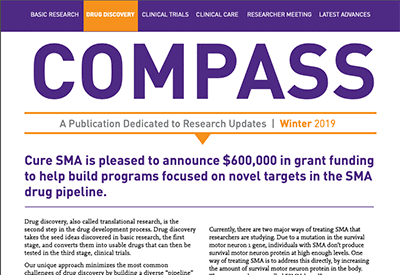Each year, Cure SMA invites scientists from around the world to submit funding proposals for basic research projects that address specific unanswered questions in SMA biology. Our Scientific Advisory Board then ranks the submitted proposals on both their scientific merit and relevance to Cure SMA’s research priorities. Funding is awarded to the highest ranked projects.
In 2024, Cure SMA awarded a total of $740,000 to six scientists to pursue these objectives!
Charlotte Sumner, MD, has been awarded $150,000 for her research study, “Determining the repertoire of mRNA isoforms in SMA using long read sequencing.”
Meet Dr. Sumner
Dr. Sumner is a physician scientist at Johns Hopkins University School of Medicine, where she cares for adults with SMA. She also leads a research laboratory focused on understanding how SMA develops and progresses. Dr. Sumner became involved in SMA research in 2001, when she attended her first Annual SMA Conference as a postdoctoral fellow. Currently, Dr. Sumner and her lab focus on identifying changes in gene expression that cause a breakdown in the communication between motor neurons and muscles in SMA.
Gene expression is the process by which instructions for how to make a protein are copied from DNA into mRNA and then taken to where proteins are made in the cell. In this Cure SMA funded study, Dr. Sumner’s lab will use a new technique called “direct RNA long read sequencing” to characterize changes in mRNA processing caused by a shortage of the SMN protein in cells affected by SMA.
The findings from this study may shed light on novel targets for SMA therapeutics, as well as reveal new ways to track disease progression and treatment response.

Cure SMA’s top basic research priorities currently include:
- Learning more about how the survival motor neuron protein (SMN), which is expressed at low levels in SMA, is expressed and functions.
- Understanding the ways the SMN protein affects motor neurons and other cells in the body.
- Developing new treatments and advancing existing drug research, focusing on add-on therapies which work independently of SMN.
- Finding new research tools that can be used to learn more about disease progression and treatment response in SMA.
Thank You!
Special thanks to the Concepcion Family, Nunemaker Family, Weisman Family, Luke 18:1 Foundation, and Dhont Foundation for their generosity to Cure SMA in our quest to invest in basic research that will ultimately drive the next generation of SMA treatments.


